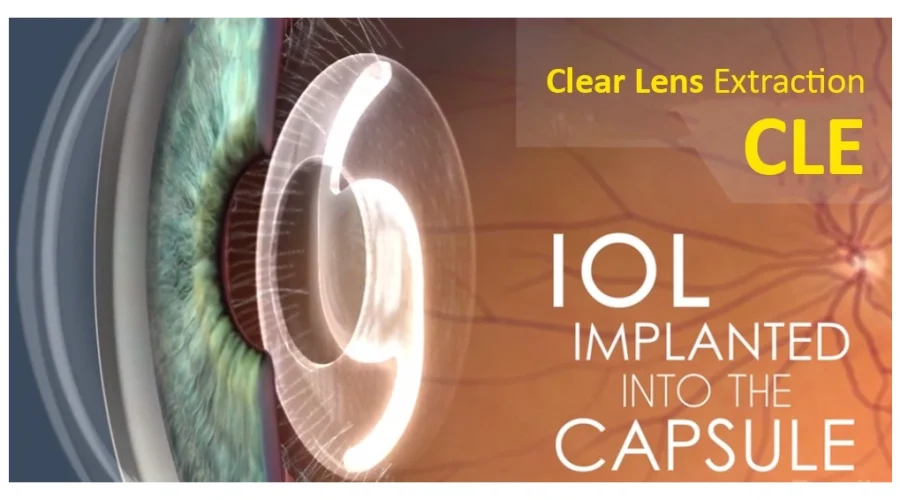Introduction to CLE Eyes
Upon happening upon CLE Eyes, I was wondering how the procedure is related to CLE Eyes as a contemporary procedure, which is also a good option for those looking to improve their vision. Based on my clinical experience, it is a good method to make people have a CLE Eyesar vision because it makes it concentrate on the inner parts of the eye in terms of health and structure. It is sanitary and modern when other corrections, such as refractive surgery, are inappropriate. And what are the chances that you have already heard about CLE Eyes as an alternative in case you have had to deal with high levels of farsightedness or nearsightedness?
When individuals are in need of freedom of not wearing glasses or contacts, the term CLE Eyesar eyes applies. In the process, the eye is exquisitely perfected off its natural lens, which due to the lack of any cataract may not even be clouded, allowing for better light transmission to the retina. Such accuracy and subtle approach will bring the sense of balance and comfort and provide the patient with an opportunity to keep CLE Eyesar eyes without the need of the corrective lenses. It is a safe way of improving the vision in the long term and a common recommendation of mine in certain situations, such as future cataract concerns.
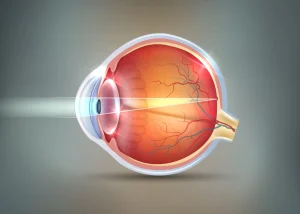
What Are CLE Eyes?
During the time I have worked with eye care patients, I have witnessed how CLE Eyesar, crystalline lenses can turn out to be an obstaCLE Eyes to a person who has severe refractive needs. There is where CLE Eyes or CLE Eyesar Lens Extraction becomes a good choice. This is done very carefully in the removal of the natural lens of the eye a procedure more like a cataract surgery except that there is no cloudy lens to be removed.
What is remarkable about CLE Eyes is that it is aimed at rectifying error of sighting, which cannot be solved using glasses or lasers, unlike lasik eye surgery. A big part of my patients with high myopia or farsightedness resorts to this option in case of ineffective complementary treatment, as they often express a need for reading glasses. The extraction assists them to do away with the blurry boundaries that usually give them a better quality of life.
Benefits of CLE Eyes
Personally, as a medical professional who has approached patients who are in need of CLE Eyesar vision without glasses, I find the aspect of improved confidence and lifestyle among patients to be most fulfilling. Most people who have undergone CLE Eyes get to enjoy CLE Eyesar visual clarity that is equivalent to or better than what glasses provided, especially in terms of distance vision. This is due to this transformation brought about by accurate restoration of their natural lens and the elimination of the hassles of relying on the glasses or contacts.
The most conspicuous thing is that the patients feel individuality, especially when considering their unique astigmatism. They are able to read, drive, and conduct daily activities without using any outside aid of vision, eliminating the need for glasses or contact lenses. Their vision is restored giving them the feeling that they are younger and more at command of their daily life.
Who Is a Good Candidate for CLE Eyes?
Based on my clinical experience, it is evident that younger people do not really get a benefit out of CLE Eyes since their ability to focus their vision has not been lost yet, which is often the reason for the surgery. However, in the situation whereby an individual is experiencing presbyopia and, at the same time, reading glasses bother them, discussing the pros and cons of CLE Eyes will be a better option. It also helps one with high myopia or hyperopia, most of the time when the other forms of vision correction, like reading glasses, are not applicable.
In practice, it is not enough to select the candidates for CLE Eyes based only on their age; factors like the surface of your eye and the presence of thin corneas must also be considered. We gauge lifestyle demands, eye conditions and the importance attached by such an individual to cutting the use of glasses. The procedure may also help those whose myopia is unstable, their presbyopia is rising, and hyperopia is becoming too uncomfortable, especially when their natural lens is replaced with an artificial intraocular lens.
Refractive Lens Exchange (RLE) and CLE Eyes
Many patients have developed confusion between Refractive Lens Exchange and CLE Eyes, particularly when they are told words such as LASIK, PRK, or even cataract, which are types of laser surgery. As a medical professional, I can see that CLE Eyesar lens exchange is somewhat similar to cataract surgery; however, it is performed in cases when the natural lens is removed without the presence of cataracts. We, on the other hand, replace the CLE Eyesar lens in case of excessive vision issues that can never be dealt with by either LASIK or PRK.
The concept of exchange in this case means the substitution of the natural lens with multifocal IOLs, which can enhance both distance and near vision, effectively replaced with an artificial intraocular lens. This method is unlike LASIK which flattens the cornea and therefore it is applicable to individuals whose refractive error is extremely high or individuals who require a long-lasting correction. It is something which many patients will like due to the stability it provides and also; is beneficial in case they do not have an option of PRK or other corneal procedures.
Difference Between CLE Eyes and RLE
| Aspect | CLE Eyes (Clear Lens Extraction) | RLE (Refractive Lens Exchange) |
|---|---|---|
| Lens Condition | Done when the natural lens is clear and there is no cataract. | Done when the lens has mild clouding, early cataract, or prior lens replacement. |
| Purpose | Removes the natural lens without unnecessary replacement, mainly for refractive correction. | Removes the natural lens as part of early cataract management or when implants are considered. |
| Nature of Procedure | Generally an elective surgery. | Can be elective but often linked to cataract progression. |
| Patient Type | Individuals with excessive refractive errors who want freedom from glasses. | Patients with moderate vision issues, early lens changes, or prior lens implants. |
| Visual Outcome | Provides strong vision improvement and reduces dependence on corrective glasses. | Provides moderate improvement, often preparing for or delaying cataract surgery. |
| Key Difference | Focuses on correcting refractive errors without cataracts. | Focuses on early cataract management and vision improvement with implants. |
Risks and Considerations of CLE Eyes
My years with vision correction patients have been characterized by a situation where risks of dry eye may exist depending on the eye health, particularly in those with thin corneas. One of them is retinal changes, which can impact the decision on whether a patient may be a candidate for surgery. This has got detachment which can be in high myopia or in those who are high at risk. Being aware of such risks at an early stage assists the patient in making appropriate decisions concerning their refractive surgery procedure, such as considering LASIK due to its benefits, or the option of having their natural lens replaced with an artificial intraocular lens.
About or after surgery, there can be few complications and these include glaucoma; this is a situation where there is the development of pressure in the eye, which is important to monitor after having the natural lens replaced with an artificial intraocular lens. The others are TASS whereby it is an unusual inflammatory reaction and endophthalmitis whereby it is an extreme infection within the eye, which can be a concern for eye care specialists managing CLE Eyes patients. Tell your ophthalmologist about these rare issues, prior to the CLE Eyes surgery.
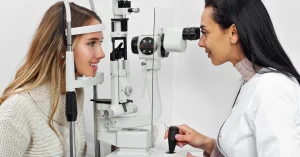
CLE Eyes Procedure Explained
CLE Eyesar Lens Extraction (CLE Eyes) procedure is typically carried out similarly to the one performed during cataract surgery. I also recollect observing this during my clinical rotation with an eye doctor who explained how to determine if CLE Eyes is right for patients who may be a candidate for this type of surgery. It was accurate in its detail, especially regarding the importance of the retina in visual outcomes. Remove gives the surgeon even the CLE Eyesar ones and most of the time this is done to treat high refractive errors.
In this method, there is the removal of soft lens, and the doctors are able to prevent excessive amounts of phaco energy. Alternatively, they may employ an I/A system, which is a type of surgery that enhances vision and replaces it with an IOL. The hand-piece slowly removes the lens without destroying surrounding tissues of the eye. This technique diminishes trauma, accelerates recovery, and involves making a small incision in your eye.
Steps Involved in the CLE Eyes Procedure
-
Evaluate the central lens of the eye to decide if CLE Eyes is necessary for patients with severe vision issues.
-
Prepare the natural lens carefully so neighboring eye structures remain safe.
-
Remove the lens gently, using less forceful suction instead of heavy phaco power.
-
Replace the removed lens with an artificial intraocular lens (IOL) and position it securely.
-
Restore clear vision with the new IOL, often removing the need for glasses.
I have observed how patients have become confident with their sight after having their natural lens replaced with an artificial intraocular lens. This comes when the technique is within their eye condition.
Types of Intraocular Lenses (IOLs) Used in CLE Eyes
When I was helping the doctor with the CLE Eyes procedures, I learned that the difference between a good and bad visual outcome of the patient is selecting an appropriate IOL. A monofocal lens is usually chosen as such a patient desires CLE Eyesar vision in the distance without using glasses, while some may prefer multifocal options for better near vision, reducing their overall need for glasses and contact lenses. It concentrates at one point and it is good when you do not mind reading glasses afterward.
Some have a greater visual freedom thanks to the advancements in artificial intraocular lens technology. In this case multifocal lenses come in. The multiple focus points that these IOLs allow you to see in both near and distance help minimize the need for glasses or contact lenses. Mono-vision is chosen by some patients, allowing them to focus on one eye at a time for distance while managing near vision with the other, thus reducing the need for reading glasses.
In such an arrangement, one eye would only see near, and the other would be a long-range eye, which can be beneficial for certain patients, especially when their natural lens is replaced with an artificial intraocular lens. It provides an intermediate variety and it does not require multifocal lens.
Post-Operative Care and Recovery After CLE Eyes Surgery
When I had experience with patients undergoing CLE Eyes procedures, there is one thing for sure – recovery is a great part of long-term success. Not only do physicians record improvements in vision, many patients who undergo regular surgical procedures like LASIK realize improved viewing within a matter of a few days, sometimes even after having their natural lens replaced with an artificial intraocular lens. As the body starts healing by itself without any form of external assistance, it is also vital to keep off the strain of the eyes at this phase to protect your eye.
The observance of the post-operative provisions leads also to the restoration of functionality and to the proper placement of the lens implant, ensuring minimal clouding of the membrane, much like ensuring soap in your eye is avoided during recovery. I have also observed situations when proper care and a continued follow-up made a huge difference, akin to ensuring soap in your eye is avoided during recovery. Minor processes such as going out into bright lights and applying eye drops are beneficial to recovery after refractive surgery. They even result in superior visual outcomes in the long run, thanks to the precision of modern laser vision techniques.
Lens Replacement Surgery for CLE Eyes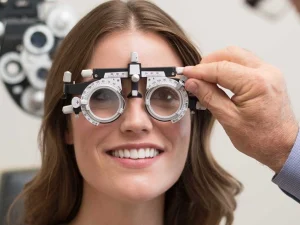
The concept of replacement stands out since I was initially exposed to lens issues when patients come to have visions free of cataracts, often seeking options like artificial intraocular lenses. In CLE Eyesar Lens Extraction (CLE Eyes), removal of the natural lens of the eye and replacement with a lens implant is undertaken even in cases where there is no presence of cataract. It is almost similar to the process of cataract surgery except that it involves correcting the vision by using a crystalline lens with an IOL, which can reduce the need for glasses and contact lenses.
Based on my experience, it happens that patients usually raise questions as to whether the procedure is safe and how the implant works. The man-made insert implanted in CLE Eyes is meant to enhance vision in people who have wide refractory errors such as high myopia or hyperopia. I have found that this kind of replacement may reduce the use of contact lenses. This is more the case when the correct lens is used and positioned in an appropriate manner to protect your eye.
How to Prepare for CLE Eyes Lens Replacement Surgery
It is good to take into account your eye health and expectations to the fullest extent prior to your CLE Eyes surgery, especially when considering the possibility of future cataract surgery. The key to this is that I always tell my patients that good preparation begins with good results, which includes discussing the option of lens implants like artificial intraocular lenses, especially for those who need glasses.
The health of your eyes and their appearance, as well as the axial length or the length of your eyeball, will be measured by your doctor, who may suggest surgery is performed if necessary. This minute considerations will make a lot of difference in the performance of the new lens in your vision.
Here are some of the initial steps that I prompt patients through during my consultations to ensure that they are certain of their decision regarding CLE Eyesar lens exchange and understand the benefits of laser vision options. The correct lens strength can be chosen easily based on the knowledge of the length of your eye and the surface of your eye. Approach and evaluation done with proper preparation will give fewer surprises during the CLE Eyes surgery and improved results to your vision.
Expected Outcomes and Vision Improvement with CLE Eyes
I also saw that as soon as I started to help the patients who were thinking about CLE Eyes, they were always interested in the fact whether there will be any real results in preventing future cataract, especially in relation to their eye’s natural lens. One of the best advantages of this surgery is that most individuals realize that they have better eyesight shortly after recovery, which can drive you home with satisfaction.
These are not mere macro-adjustments; they can significantly impact near and far vision. They help in a great way on everyday visual endeavors, especially for those with astigmatism, who often need glasses for reading. These are reading, for instance, driving, or the ability to show a face at a distance, all of which can be improved when the natural lens is replaced with an artificial intraocular lens.
With the help of the well-thought-out choices of targets in accordance with the vision requirements of each individual, CLE Eyesar lens exchange facilitates the provision of improved performance in their daily life. I have personally witnessed how some people who have been unable to see can now do their normal activities easily after having glasses through glasses on board, as their vision is much better. Such an individualized method does not only improve the results, but also corresponds to what the patient needs to achieve the most.
Follow-Up Appointments After CLE Eyes Surgery
Follow-ups are highly significant after CLE Eyes surgery to monitor any potential astigmatism. These eye exams assist the doctors to monitor the recovery of the patients. They also enable doctors to notice any problem in its early stages. During my experience in postoperative care, such outpatient surgery interventions reassure the patient since they are brief visits. They are also used in making minuscule adjustments towards improved vision outcomes.
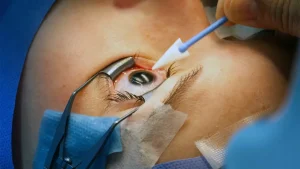
Every follow-up is concerned with the eye being adapted to properly and the visual acuity. It is also happy to see the patients get back CLE Eyesar vision and can feel confident again after the lens implant operation. Regular visits help in the profound results significantly, allowing patients to return to work sooner. This is more so, when treated with care and consistency.
Final Thoughts on CLE Eyes
I also saw that as soon as I started to help the patients who were thinking about CLE Eyes, they were always interested in the fact whether there will be any real results. The boosted levels of clarity most individuals feel on the heels of recovering are one of the most gratifying parts of this process. Such variations are momentous. They enhance everyday visual activities such as reading, driving and facial identification at a distance.
With the help of the well-thought-out choices of targets in accordance to the vision requirements of each individual, CLE Eyes facilitates the provision of the improved performance in their daily life. I have personally witnessed how some people who have been unable to see can now do their normal activities easily after having glasses on board, or having their natural lens replaced with an artificial intraocular lens. Such an individualized method does not only improve the results, but also corresponds to what the patient needs to achieve the most.
FAQs About CLE Eyes
What Is a CLE Eyes Procedure for Eyes?
CLE Eyes is a lens replacement procedure that removes the eye’s natural lens and replaces it with an artificial one to correct vision.
How Much Does CLE Eyes Surgery Cost?
The cost usually depends on location, surgeon, and lens choice, but it typically falls within the $3,000–$5,000 range per eye.
Is CLE Eyes Surgery Safe?
When done properly, CLE Eyes is considered safe and effective with a low risk of complications.
What Is a CLE Eyes Procedure for Eyes?
CLE Eyes is a lens replacement procedure that removes the eye’s natural lens and replaces it with an artificial one to correct vision.
How Much Does CLE Eyes Surgery Cost?
The cost usually depends on location, surgeon, and lens choice, but it typically falls within the $3,000–$5,000 range per eye.
Is CLE Eyes Surgery Safe?
When done properly, CLE Eyes is considered safe and effective with a low risk of complications.
